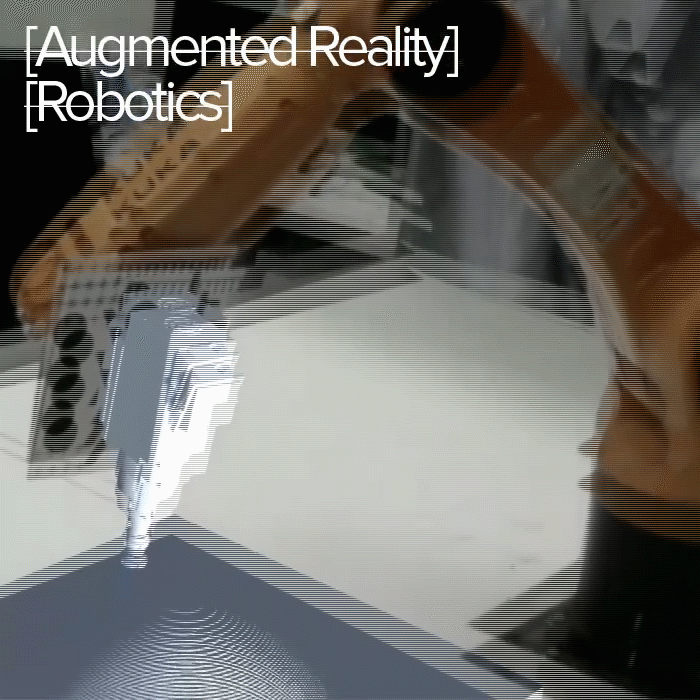





























By Niles Hand | Third-year UG Studio EP.
Garden-Museum
Third-year UG Studio | Fall 2018
From [the Studio Syllabus]:
Located in Kent across from the CAED, "Animo[embryonic]solids" studio revisits form, space, and architecture as a set of embryos; things with the potential for development at a rudimentary stage, yet highly specific and sophisticated.
Employing both notions of making and site design, students design an enclosed and open garden/gallery complex, through multiple conceptual and analytical exercises.
Concentrated on the potential of animation and simulation as a design tool and using "robotically augmented imaging"--RAI[i] method through robotic videography, "Animo[embryonic]solids" studio precisely studies the notion of growth, deformation, texture, surface, objects inside objects, and objects above objects, to revisit architectural relationships of ground, massing, and interior.
Animo[embryonic]solids is an attempt to revisit architecture as an alive/animal character, which is animated in nature, but frozen/static at the moment similar to taxidermy animals! During the semester, the studio studies--in both digital and analog mediums, the potential of the "phenomenal motion"[ii]-- "static animation" as a manipulation/design tool to initiate a formal dialogue. The process is augmented with digital and experimental fabrication, videography, video-making, and improvised and key-framed robotic videography using Oriole (a custom-made robotic plug-in for Grasshopper 3D) for activating the robot arm as the physical translation of the digital camera to closely study form, massing and ground relationships in hybrid cyber-physical context.
Located in Kent and across from the CAED, the site of the project sits on the edge of the Haymaker Parkway and South Willow Street. Using the studies from the first project (Animal Object Taxidermy), students develop a completed garden-museum project. The architecture not only meets all the qualities of the animal object but also tells a story through its animated interiors and spatial atmosphere.
The Studio constantly goes back and forth between digital and physical design environments using prototyping and testing. In this project, students precisely study both the site development at a finer scale, and the development of interiors through the notion of objects inside objects.
...
[i] Poustinchi, E. (2018). Robotically Augmented Imaging (RAI): Spatial Experience Customization Using Robotic Imaging as a Design Tool.
[ii] Lynn, G. (1999). Animate Form. New York: Princeton Architectural Press.
Student: Amanda Harrer



![Animo[Embryonic]Solids001](https://static.wixstatic.com/media/7ea1bd_10627ffc7dc6460ea2b452ec3706c67d~mv2.jpg/v1/fill/w_250,h_176,al_c,q_90,enc_auto/7ea1bd_10627ffc7dc6460ea2b452ec3706c67d~mv2.jpg) | ![Animo[Embryonic]Solids002](https://static.wixstatic.com/media/7ea1bd_8a179ec27356408d92c29a09bd17fac9~mv2.jpg/v1/fill/w_250,h_161,al_c,q_90,enc_auto/7ea1bd_8a179ec27356408d92c29a09bd17fac9~mv2.jpg) |
|---|---|
![Animo[Embryonic]Solids003](https://static.wixstatic.com/media/7ea1bd_e9d80caa6881468cb84bd9c7a402f033~mv2.jpg/v1/fill/w_250,h_161,al_c,q_90,enc_auto/7ea1bd_e9d80caa6881468cb84bd9c7a402f033~mv2.jpg) | ![Animo[Embryonic]Solids004](https://static.wixstatic.com/media/7ea1bd_7d8ec7e1466c45b4886ddf8fb826ee4b~mv2.jpg/v1/fill/w_250,h_161,al_c,q_90,enc_auto/7ea1bd_7d8ec7e1466c45b4886ddf8fb826ee4b~mv2.jpg) |
![Animo[Embryonic]Solids005](https://static.wixstatic.com/media/7ea1bd_505af7778f7349eaa87c7ee31328a293~mv2.jpg/v1/fill/w_250,h_161,al_c,q_90,enc_auto/7ea1bd_505af7778f7349eaa87c7ee31328a293~mv2.jpg) | ![Animo[Embryonic]Solids006](https://static.wixstatic.com/media/7ea1bd_747eb353d16d4000bf65880ce41f58fa~mv2.jpg/v1/fill/w_250,h_161,al_c,q_90,enc_auto/7ea1bd_747eb353d16d4000bf65880ce41f58fa~mv2.jpg) |
![Animo[Embryonic]Solids007](https://static.wixstatic.com/media/7ea1bd_98b0dd6fe63141e78d5460104da9edec~mv2.jpg/v1/fill/w_250,h_161,al_c,q_90,enc_auto/7ea1bd_98b0dd6fe63141e78d5460104da9edec~mv2.jpg) | ![Animo[Embryonic]Solids008](https://static.wixstatic.com/media/7ea1bd_edb769fca4344bd9a5bd842e01cbb5f4~mv2.jpg/v1/fill/w_250,h_161,al_c,q_90,enc_auto/7ea1bd_edb769fca4344bd9a5bd842e01cbb5f4~mv2.jpg) |
![Animo[Embryonic]Solids009](https://static.wixstatic.com/media/7ea1bd_df4a809cc58c48ab998fec007564015e~mv2.jpg/v1/fill/w_250,h_161,al_c,q_90,enc_auto/7ea1bd_df4a809cc58c48ab998fec007564015e~mv2.jpg) | ![Animo[Embryonic]Solids010](https://static.wixstatic.com/media/7ea1bd_642a7cf890e741ee948245720f62a507~mv2.jpg/v1/fill/w_250,h_161,al_c,q_90,enc_auto/7ea1bd_642a7cf890e741ee948245720f62a507~mv2.jpg) |
![Animo[Embryonic]Solids011](https://static.wixstatic.com/media/7ea1bd_d8a2ad90020e414b9a62cc398c3d8222~mv2.jpg/v1/fill/w_250,h_161,al_c,q_90,enc_auto/7ea1bd_d8a2ad90020e414b9a62cc398c3d8222~mv2.jpg) | ![Animo[Embryonic]Solids012](https://static.wixstatic.com/media/7ea1bd_797b0c6a44994dda813dc54bf490e0d8~mv2.jpg/v1/fill/w_250,h_149,al_c,q_90,enc_auto/7ea1bd_797b0c6a44994dda813dc54bf490e0d8~mv2.jpg) |
![Animo[Embryonic]Solids013](https://static.wixstatic.com/media/7ea1bd_e5304dfab74c4261b78c11bcb4b04eb2~mv2.jpg/v1/fill/w_250,h_187,al_c,q_90,enc_auto/7ea1bd_e5304dfab74c4261b78c11bcb4b04eb2~mv2.jpg) | ![Animo[Embryonic]Solids014](https://static.wixstatic.com/media/7ea1bd_a6f609b3dcfd4cd9b46d90aed415e8e6~mv2.jpg/v1/fill/w_250,h_333,al_c,q_90,enc_auto/7ea1bd_a6f609b3dcfd4cd9b46d90aed415e8e6~mv2.jpg) |
![Animo[Embryonic]Solids015](https://static.wixstatic.com/media/7ea1bd_7437d1b305f546b3995693ff315ab750~mv2.jpg/v1/fill/w_250,h_333,al_c,q_90,enc_auto/7ea1bd_7437d1b305f546b3995693ff315ab750~mv2.jpg) |
Student: Yu-Ting Chang

![Animo[Embryonic]Solids015](https://static.wixstatic.com/media/7ea1bd_063a181ceed24770b658d974da812e9e~mv2.jpg/v1/fill/w_250,h_166,al_c,q_90,enc_auto/7ea1bd_063a181ceed24770b658d974da812e9e~mv2.jpg) | ![Animo[Embryonic]Solids016](https://static.wixstatic.com/media/7ea1bd_31fe32d4bb504713bdbad0dcd18a2e00~mv2.jpg/v1/fill/w_250,h_166,al_c,q_90,enc_auto/7ea1bd_31fe32d4bb504713bdbad0dcd18a2e00~mv2.jpg) |
|---|---|
![Animo[Embryonic]Solids017](https://static.wixstatic.com/media/7ea1bd_f1a4ddbb21454a23b714d758bd9f7930~mv2.jpg/v1/fill/w_250,h_166,al_c,q_90,enc_auto/7ea1bd_f1a4ddbb21454a23b714d758bd9f7930~mv2.jpg) | ![Animo[Embryonic]Solids018](https://static.wixstatic.com/media/7ea1bd_46e090fe427445e0a3d044acd790f554~mv2.jpg/v1/fill/w_250,h_166,al_c,q_90,enc_auto/7ea1bd_46e090fe427445e0a3d044acd790f554~mv2.jpg) |
![Animo[Embryonic]Solids019](https://static.wixstatic.com/media/7ea1bd_129f3ecb03b94eed9541bd2926f4d2ab~mv2.jpg/v1/fill/w_250,h_166,al_c,q_90,enc_auto/7ea1bd_129f3ecb03b94eed9541bd2926f4d2ab~mv2.jpg) |
Student: Niles Hand
.jpg)

![Animo[Embryonic]Solids020](https://static.wixstatic.com/media/7ea1bd_aab3fefd745d47a49313e815369c9197~mv2.jpg/v1/fill/w_250,h_166,al_c,q_90,enc_auto/7ea1bd_aab3fefd745d47a49313e815369c9197~mv2.jpg) | ![Animo[Embryonic]Solids021](https://static.wixstatic.com/media/7ea1bd_b6e492776dcc46688587ca1fa04a3d2f~mv2.jpg/v1/fill/w_250,h_161,al_c,q_90,enc_auto/7ea1bd_b6e492776dcc46688587ca1fa04a3d2f~mv2.jpg) |
|---|---|
![Animo[Embryonic]Solids022](https://static.wixstatic.com/media/7ea1bd_d44be42bf6eb4043aed8698b8dd9d1db~mv2.jpg/v1/fill/w_250,h_161,al_c,q_90,enc_auto/7ea1bd_d44be42bf6eb4043aed8698b8dd9d1db~mv2.jpg) | ![Animo[Embryonic]Solids023](https://static.wixstatic.com/media/7ea1bd_aa8c25d6bae644d99e164eee0cb24bc5~mv2.jpg/v1/fill/w_250,h_161,al_c,q_90,enc_auto/7ea1bd_aa8c25d6bae644d99e164eee0cb24bc5~mv2.jpg) |
![Animo[Embryonic]Solids024](https://static.wixstatic.com/media/7ea1bd_61fb95b681b348b4aa1d0a3395346418~mv2.jpg/v1/fill/w_250,h_161,al_c,q_90,enc_auto/7ea1bd_61fb95b681b348b4aa1d0a3395346418~mv2.jpg) | ![Animo[Embryonic]Solids025](https://static.wixstatic.com/media/7ea1bd_2e7ab33894c441e09bfef6a48617b5f4~mv2.jpg/v1/fill/w_250,h_161,al_c,q_90,enc_auto/7ea1bd_2e7ab33894c441e09bfef6a48617b5f4~mv2.jpg) |
![Animo[Embryonic]Solids026](https://static.wixstatic.com/media/7ea1bd_40db955fda034102a94fc3c039bfd281~mv2.jpg/v1/fill/w_250,h_141,al_c,q_90,enc_auto/7ea1bd_40db955fda034102a94fc3c039bfd281~mv2.jpg) | ![Animo[Embryonic]Solids027](https://static.wixstatic.com/media/7ea1bd_01e656202a14466aadc8649657168c22~mv2.jpg/v1/fill/w_250,h_140,al_c,q_90,enc_auto/7ea1bd_01e656202a14466aadc8649657168c22~mv2.jpg) |
![Animo[Embryonic]Solids028](https://static.wixstatic.com/media/7ea1bd_2cff1131fcc04ebcacf736f022f0c2bf~mv2.jpg/v1/fill/w_250,h_161,al_c,q_90,enc_auto/7ea1bd_2cff1131fcc04ebcacf736f022f0c2bf~mv2.jpg) | ![Animo[Embryonic]Solids029](https://static.wixstatic.com/media/7ea1bd_fb006af124454c59beacb547f6cee2f3~mv2.jpg/v1/fill/w_250,h_161,al_c,q_90,enc_auto/7ea1bd_fb006af124454c59beacb547f6cee2f3~mv2.jpg) |
![Animo[Embryonic]Solids030](https://static.wixstatic.com/media/7ea1bd_5dd09f4dbfaf45118d197bc7f793b373~mv2.jpg/v1/fill/w_250,h_161,al_c,q_90,enc_auto/7ea1bd_5dd09f4dbfaf45118d197bc7f793b373~mv2.jpg) | ![Animo[Embryonic]Solids031](https://static.wixstatic.com/media/7ea1bd_d281bfe59d4c4858bebc14d5fb9f38ac~mv2.jpg/v1/fill/w_250,h_166,al_c,q_90,enc_auto/7ea1bd_d281bfe59d4c4858bebc14d5fb9f38ac~mv2.jpg) |
![Animo[Embryonic]Solids032](https://static.wixstatic.com/media/7ea1bd_514a55d10ae24694bcd4f08c7a0ec0f6~mv2.jpg/v1/fill/w_250,h_138,al_c,q_90,enc_auto/7ea1bd_514a55d10ae24694bcd4f08c7a0ec0f6~mv2.jpg) | ![Animo[Embryonic]Solids033](https://static.wixstatic.com/media/7ea1bd_f222c3b7b087428eaf65a037ef112731~mv2.jpg/v1/fill/w_250,h_166,al_c,q_90,enc_auto/7ea1bd_f222c3b7b087428eaf65a037ef112731~mv2.jpg) |
![Animo[Embryonic]Solids034](https://static.wixstatic.com/media/7ea1bd_879eb1a2869146babef86656b568b8e4~mv2.jpg/v1/fill/w_250,h_166,al_c,q_90,enc_auto/7ea1bd_879eb1a2869146babef86656b568b8e4~mv2.jpg) | ![Animo[Embryonic]Solids035](https://static.wixstatic.com/media/7ea1bd_a00f664c9f454ffe824d37702ec11b57~mv2.jpg/v1/fill/w_250,h_166,al_c,q_90,enc_auto/7ea1bd_a00f664c9f454ffe824d37702ec11b57~mv2.jpg) |
Student: Abdullah Samarin

![Animo[Embryonic]Solids036](https://static.wixstatic.com/media/7ea1bd_c3c41c2861e448c4bfc5078d5d34620f~mv2.jpg/v1/fill/w_250,h_140,al_c,q_90,enc_auto/7ea1bd_c3c41c2861e448c4bfc5078d5d34620f~mv2.jpg) | ![Animo[Embryonic]Solids037](https://static.wixstatic.com/media/7ea1bd_980ee9e1f27d4e9eb7ca1002929f8aa9~mv2.jpg/v1/fill/w_250,h_166,al_c,q_90,enc_auto/7ea1bd_980ee9e1f27d4e9eb7ca1002929f8aa9~mv2.jpg) |
|---|---|
![Animo[Embryonic]Solids038](https://static.wixstatic.com/media/7ea1bd_5afe6050f022464a8953834688b33bd5~mv2.jpg/v1/fill/w_250,h_136,al_c,q_90,enc_auto/7ea1bd_5afe6050f022464a8953834688b33bd5~mv2.jpg) | ![Animo[Embryonic]Solids039](https://static.wixstatic.com/media/7ea1bd_ba0427b6990c4456893ee9a597498e2e~mv2.jpg/v1/fill/w_250,h_136,al_c,q_90,enc_auto/7ea1bd_ba0427b6990c4456893ee9a597498e2e~mv2.jpg) |
![Animo[Embryonic]Solids040](https://static.wixstatic.com/media/7ea1bd_5162127170c34e9fac91cc669f6bcd4a~mv2.jpg/v1/fill/w_250,h_136,al_c,q_90,enc_auto/7ea1bd_5162127170c34e9fac91cc669f6bcd4a~mv2.jpg) | ![Animo[Embryonic]Solids041](https://static.wixstatic.com/media/7ea1bd_5facaffaa82048c88dc21dd24f545d16~mv2.jpg/v1/fill/w_250,h_136,al_c,q_90,enc_auto/7ea1bd_5facaffaa82048c88dc21dd24f545d16~mv2.jpg) |
![Animo[Embryonic]Solids042](https://static.wixstatic.com/media/7ea1bd_c7cfcd43cad8491bb3fa3ccf3e394705~mv2.jpg/v1/fill/w_250,h_142,al_c,q_90,enc_auto/7ea1bd_c7cfcd43cad8491bb3fa3ccf3e394705~mv2.jpg) | ![Animo[Embryonic]Solids043](https://static.wixstatic.com/media/7ea1bd_7e41b9e7c1a84471aa2d5a3f57fd09f6~mv2.jpg/v1/fill/w_250,h_142,al_c,q_90,enc_auto/7ea1bd_7e41b9e7c1a84471aa2d5a3f57fd09f6~mv2.jpg) |
![Animo[Embryonic]Solids044](https://static.wixstatic.com/media/7ea1bd_7bc56a70227a4dfa84a1f20779d28fa3~mv2.jpg/v1/fill/w_250,h_141,al_c,q_90,enc_auto/7ea1bd_7bc56a70227a4dfa84a1f20779d28fa3~mv2.jpg) | ![Animo[Embryonic]Solids045](https://static.wixstatic.com/media/7ea1bd_b884cde612f7488aa55518e46f622606~mv2.jpg/v1/fill/w_250,h_160,al_c,q_90,enc_auto/7ea1bd_b884cde612f7488aa55518e46f622606~mv2.jpg) |
![Animo[Embryonic]Solids046](https://static.wixstatic.com/media/7ea1bd_30c8c60de55a41298a746bc06f0b38d0~mv2.jpg/v1/fill/w_250,h_162,al_c,q_90,enc_auto/7ea1bd_30c8c60de55a41298a746bc06f0b38d0~mv2.jpg) |
Student: Branden Hudak

![Animo[Embryonic]Solids047](https://static.wixstatic.com/media/7ea1bd_93daeb6dc8de4c7f8987d7b1d43f326e~mv2.jpg/v1/fill/w_250,h_250,al_c,q_90,enc_auto/7ea1bd_93daeb6dc8de4c7f8987d7b1d43f326e~mv2.jpg) | ![Animo[Embryonic]Solids048](https://static.wixstatic.com/media/7ea1bd_45625f1b712b402bb7a733a6fb95f07f~mv2.jpg/v1/fill/w_250,h_249,al_c,q_90,enc_auto/7ea1bd_45625f1b712b402bb7a733a6fb95f07f~mv2.jpg) |
|---|---|
![Animo[Embryonic]Solids049](https://static.wixstatic.com/media/7ea1bd_e7e23d008afe4e799d69e9c7ea4fcb24~mv2.jpg/v1/fill/w_250,h_248,al_c,q_90,enc_auto/7ea1bd_e7e23d008afe4e799d69e9c7ea4fcb24~mv2.jpg) | ![Animo[Embryonic]Solids050](https://static.wixstatic.com/media/7ea1bd_c8b9b01882d642d5ab4e543731bdfed6~mv2.jpg/v1/fill/w_250,h_249,al_c,q_90,enc_auto/7ea1bd_c8b9b01882d642d5ab4e543731bdfed6~mv2.jpg) |
![Animo[Embryonic]Solids051](https://static.wixstatic.com/media/7ea1bd_e8bb159fa9694204938abd0d05ec4e38~mv2.jpg/v1/fill/w_250,h_166,al_c,q_90,enc_auto/7ea1bd_e8bb159fa9694204938abd0d05ec4e38~mv2.jpg) | ![Animo[Embryonic]Solids052](https://static.wixstatic.com/media/7ea1bd_90d4aee90a8f4855a17bf1f7da0b75ef~mv2.jpg/v1/fill/w_250,h_161,al_c,q_90,enc_auto/7ea1bd_90d4aee90a8f4855a17bf1f7da0b75ef~mv2.jpg) |
![Animo[Embryonic]Solids053](https://static.wixstatic.com/media/7ea1bd_7ba0eb239e504147869a0aecd342c8eb~mv2.jpg/v1/fill/w_250,h_161,al_c,q_90,enc_auto/7ea1bd_7ba0eb239e504147869a0aecd342c8eb~mv2.jpg) |